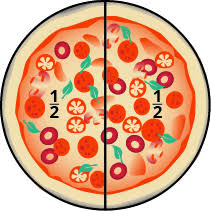Activity W 3.2 Let’s Brainstorm
Students may be asked to solve the following puzzles either in groups or individually.
They may explain their strategy of obtaining the result.
Let’s Brainstorm
Puzzle 1: Symbol Grid
1. The grid below has symbols that contain a whole number value less than 10.
Each symbol has its own value.
The numbers you see at the end of each row and column are the sums of the figures’ values for that row or column.
Can you find out the value of each symbol ?
ANSWER:
Let’s name the shapes:
-
🟦 Pentagon = P
-
🔺 Triangle = T
-
⭐ Star = S
-
➕ Plus = C
And solve!
Row equations:1️⃣
1. P+T+P+S=15
2. C+S+P+S=23
3.T+C+T+?=16
4. S+T+?+P=14
Column equations:
1. P+C+T+S=20
2. T+S+C+T=24
3. P+P+T+?=7
4. S+S+?+P=17
Let’s assume X = 0 to test:
From Col 3: 𝑃+P+T=7
From Row 3: T+C+T=16
So 2T+C=16.
From Col 1: P+C+T+S=20.
And from Row 1: 2P+T+S=15.
SOLUTION:
- 🟦 Pentagon P=1
- 🔺 Triangle T= 5
- ⭐ Star S = 8
- ➕ Plus C = 6
Puzzle 2: Symbol Equation
2. Here, you are given two representations, where symbols have been used.
Each symbol represents a numeric value. Find the value of each symbol.
Given the equations:
-
🟦 Blue Square = S
-
🔺 Orange Triangle = T
-
🟡 Yellow Circle = C
-
⭐ Star = R
SOLUTION:
| 🟦 Blue Square (S) | = 5 |
| 🔺 Orange Triangle (T) | = 4 |
| 🟡 Yellow Circle (C) = | 6 |
| ⭐ Star (R) | = 12 - 5 = 7 |
Puzzle 3: Make 5+5+5 = 550 True
3. Make the following equation true by drawing/putting/writing a single line.
SOLUTION :
Puzzle 4:Roman Numeral Trick
What should be added to IX to make six?
Add S in front of IX to form SIX.
So the answer is: Add ‘S’!
Teachers may try to find some more such puzzles that will engage students in the process of exploration
Puzzle 1: Symbol Sums
| Symbol | Meaning |
|---|---|
| 🍎 Apple = ? | |
| 🍌 Banana = ? | |
| 🍇 Grapes = ? |
Equations:
-
🍎 + 🍎 + 🍎 = 18
-
🍌 + 🍎 + 🍌 = 16
-
🍇 + 🍇 + 🍎 = 20
Find the value of each fruit!
Solution:
-
🍎 + 🍎 + 🍎 = 18 → 🍎 = 6
-
🍌 + 6 + 🍌 = 16 → 2🍌 = 10 → 🍌 = 5
-
🍇 + 🍇 + 6 = 20 → 2🍇 = 14 → 🍇 = 7
Final Answer:
🍎 = 6, 🍌 = 5, 🍇 = 7.
Puzzle 2: Number Logic
| Symbol | Meaning |
|---|---|
| 🐾 Paw = ? | |
| 🐟 Fish = ? | |
| 🦴 Bone = ? |
Equations:
-
🐾 + 🐾 + 🐟 = 22
-
🐟 + 🦴 + 🦴 = 14
-
🐾 + 🦴 = 13
Find the value of 🐾, 🐟, 🦴.
Solution:
From (3):
🐾 + 🦴 = 13 → 🦴 = 13 - 🐾.
Substitute into (2):
🐟 + 2(13 - 🐾) = 14
Simplify and solve using substitution or trial.
For example:
If 🐾 = 8, 🦴 = 5.
Now check in (1):
8 + 8 + 🐟 = 22 → 🐟 = 6.
So final values:
🐾 = 8, 🐟 = 6, 🦴 = 5.
Puzzle 3: Matchstick Equation
Make the equation correct by moving 1 matchstick:
Solution:
Move one stick from "6" to make it "5":



















